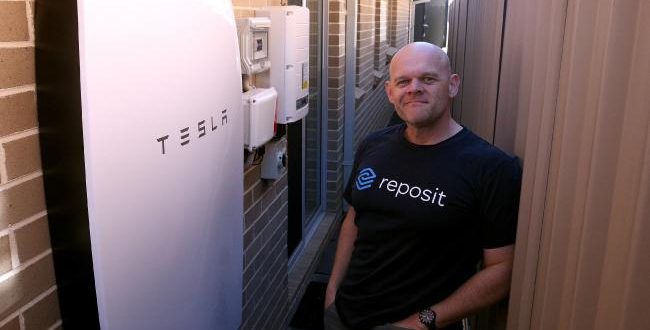Call it battery fetishism if you must, but it seems that batteries are going to play an even bigger role in power sources being tested in Australia. Take for example the virtual power plant.
A VPP comprises hundreds, maybe thousands, of homes each with solar panels where excess energy is stored in batteries. Instead of operating as separate entities, energy stored in those batteries is made available in unison to the grid at times of peak load or an outage.
An outside body such as an energy retailer co-ordinates the flow of battery power back to the grid. For the rest of the time, consumers self-manage their stored solar power.
CSIRO has been developing the software for this, and although it is not directly part of South Australia’s new energy plan, it is being tested in South Australia separately by AGL Energy, Evergen and SA Power Network. And it seems plenty of power will be available.
The Australian this week analysed the bill of Sydney’s Nick Pfitzner, his wife and two children after installing a Tesla Powerwall system. Rather than drawing power from the grid as before, the Pfitzners returned more power to the grid than they took. They effectively supplied 2457kWh to the community over a 12-month period.
It may be a small contribution but if tens of thousands of homes supplied a net energy benefit to the grid, it would reduce shortage problems. That’s what these companies are banking on.
AGL began the scheme in last August with the release of 150 batteries, and announced the availability of another 350 batteries in December with the aim of 1000 homes joining the pilot scheme. AGL is using subsidised Sunverge 11.6kWh batteries costing $3849. Sunverge and the Australian Renewable Energy Agency are partnering AGL in the project.
This VPP of 1000 homes produces a modest 5 megawatts of power. That’s 1/20th of the 100MW of batteries that Tesla founder Elon Musk said last week he would install to fix South Australia’s energy supply. It is 1/50th of the 250MW gas-fired power plant that Premier Jay Weatherill announced this week to provide back-up power for the state’s system.
Evergen, meanwhile, is developing its own VPPs using CSIRO’s intelligent management software. It costs about $15,500 for 5.3KW of solar panels and a 9.6kWh battery. Its intelligence ensures a battery is used when power is at its most expensive at peak times.
VPPs also may change how people see the endgame in solar energy. For many the endgame was complete independence from the grid. But the new endgame may be staying on the grid, both as an energy supplier and a consumer.
The South Australian power debate has been a clash between the practical and the visionary. The practical, which had been neglected by the state government, was ensuring there was sufficient back-up generation in its push for more renewable energy. That now has been addressed mainly by the proposed gas-fired power plant and 100MW battery plant.
At least there is a plan in South Australia, albeit one that will place its drive for self-sufficiency in conflict with the operation of the National Electricity Market. Musk, who started the present debate, may or may not get to build his 100MW battery farm in 100 days that was billed as a “fix” in South Australia.
There are a couple of myths about this project. First, 100MW could never be a full fix for a state power supply of about 2900MW on its own. It’s part of a solution. Second, the 100 days means 100 days after preliminary investigations, and after contracts are signed. This could be many months.
Musk will be up against other energy suppliers that want to build a battery park. One is AGL Energy, another is Lloyds Register in partnership with battery provider RES, which proposed the same 100MW battery fix late last year. Lloyds reportedly costed it at $100 million and, like Musk, said it could be built quickly.
As for Musk and Australian tech billionaire Mike Cannon-Brookes, who first kicked off a Twitter debate with Musk over South Australia’s energy concerns, they have had an amazing impact on the energy debate in Australia. If nothing more, they have taken it beyond the spectacle of politicians brandishing clumps of coal in parliament to at least an aspirational level.
Reader comments on this site are moderated before publication to promote lively and civil debate. We encourage your comments but submitting one does not guarantee publication. We publish hundreds of comments daily, and if a comment is rejected it is likely because it does not meet with our comment guidelines, which you can read here. No correspondence will be entered into if a comment is declined.





